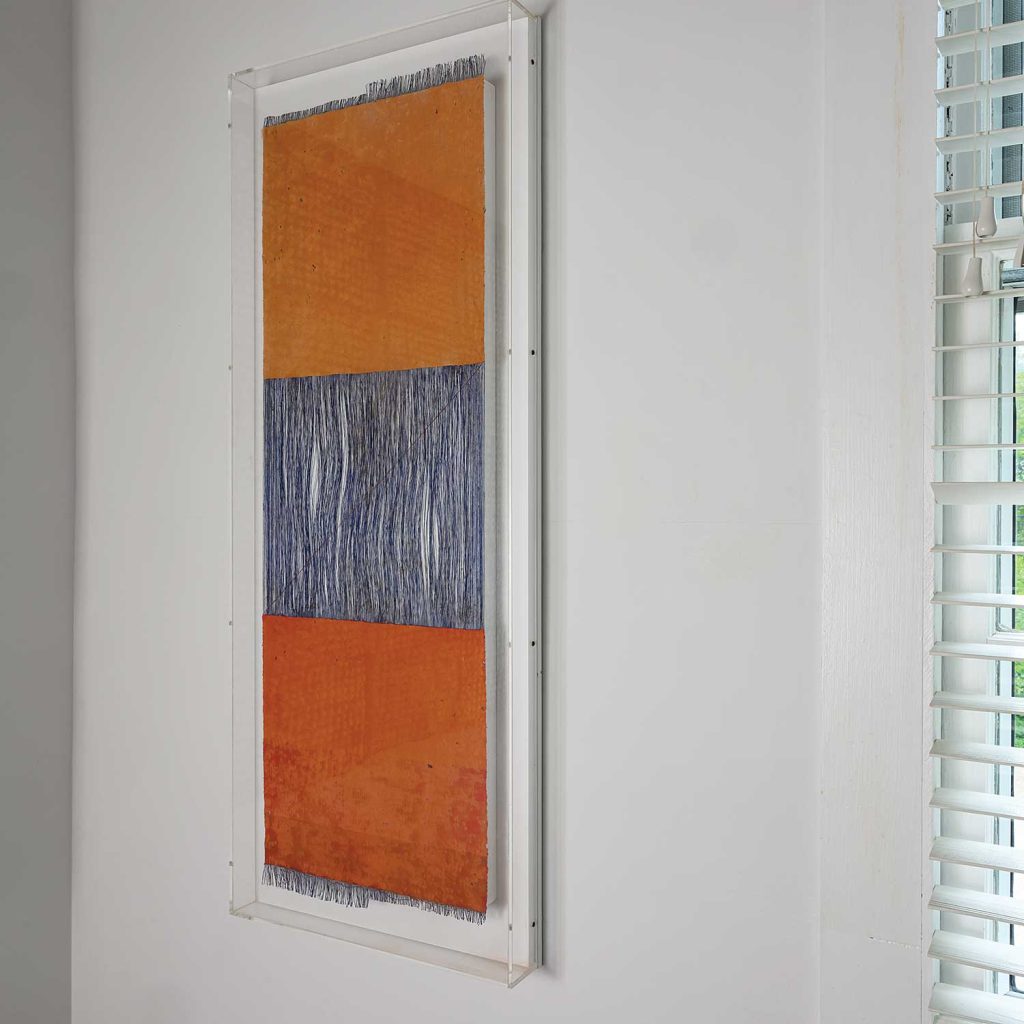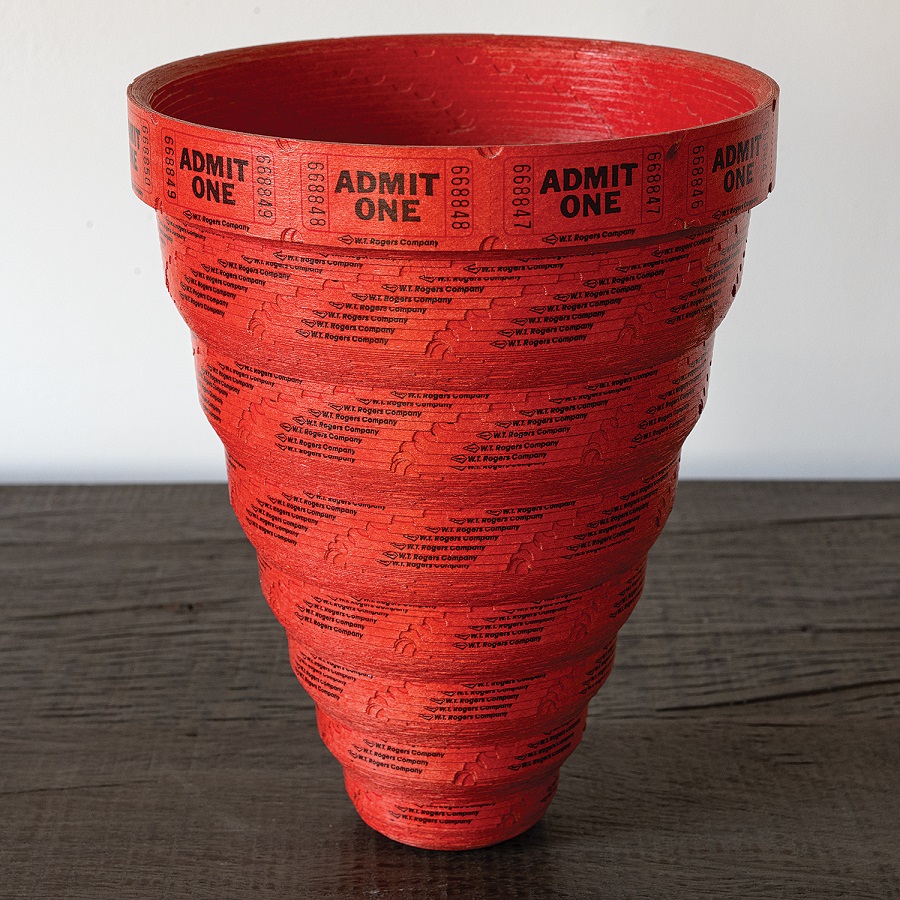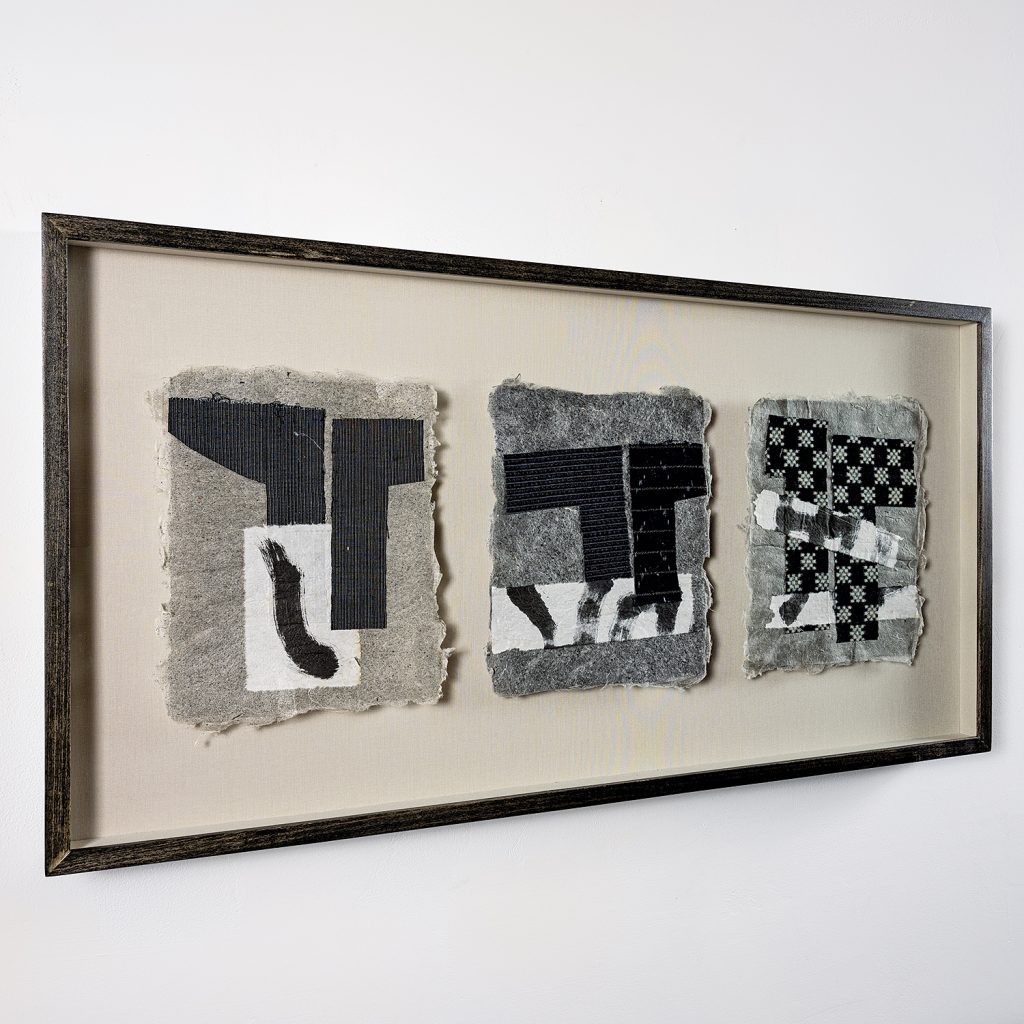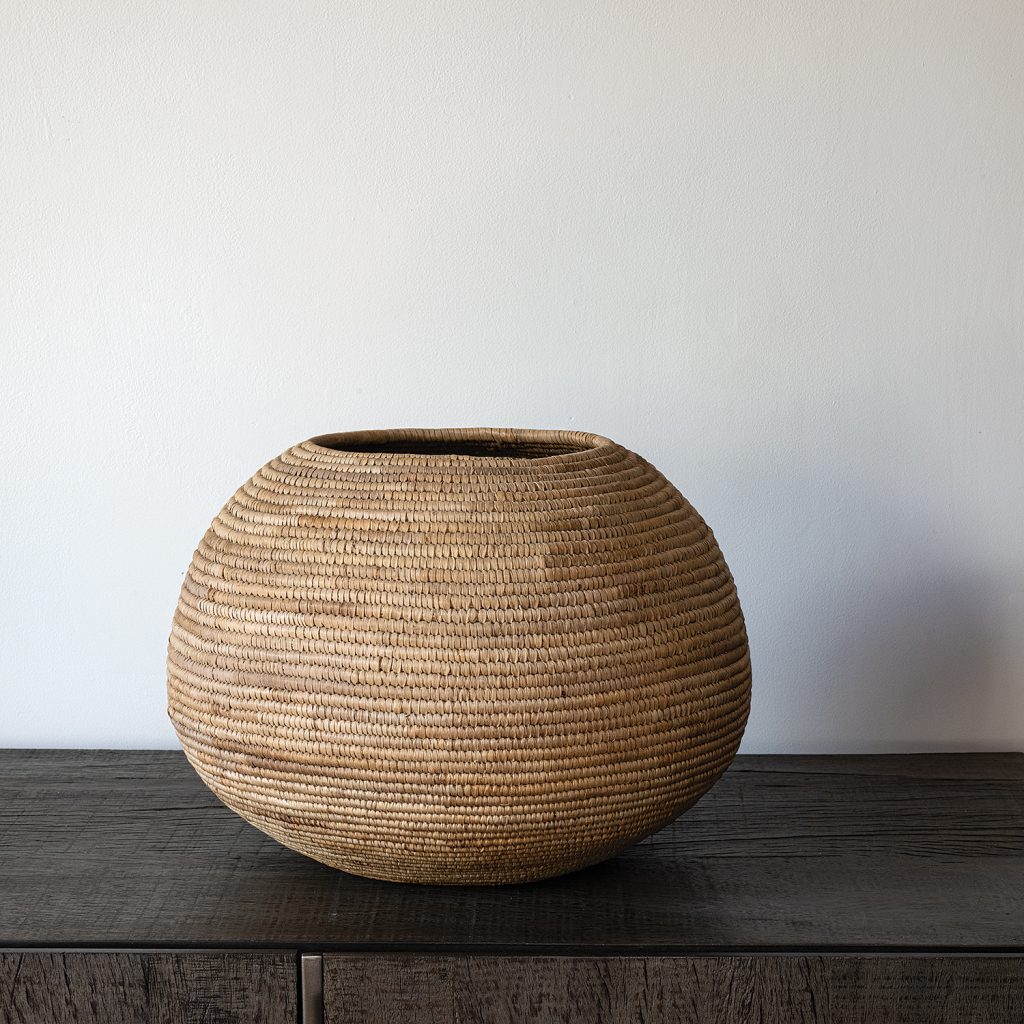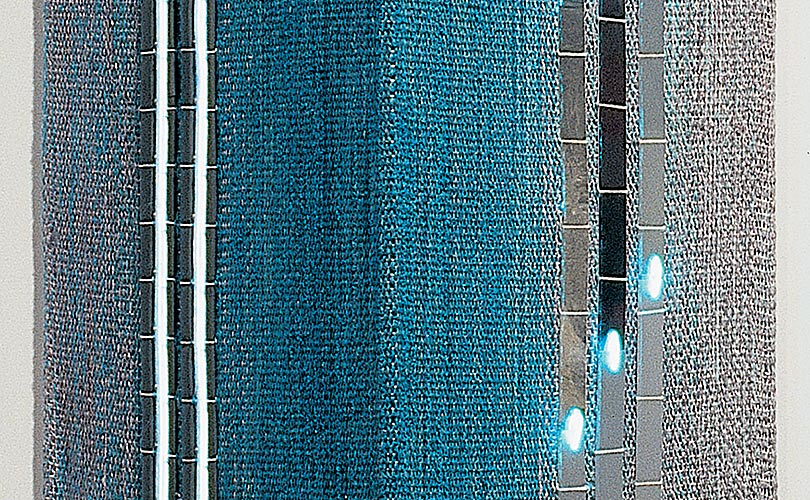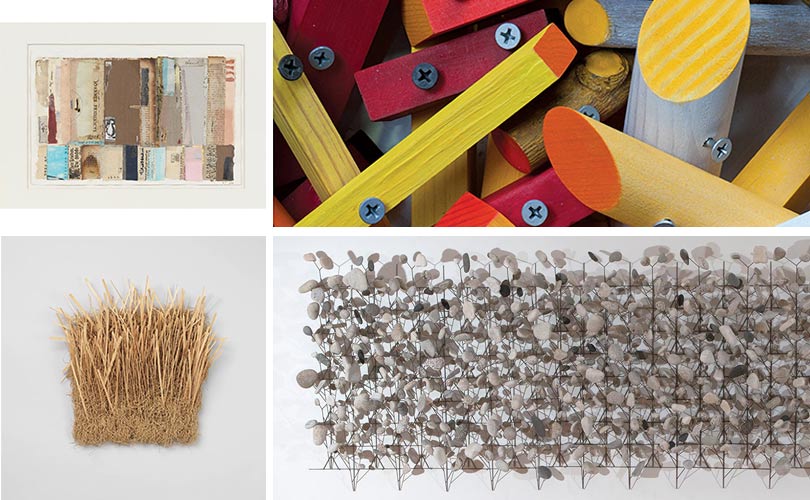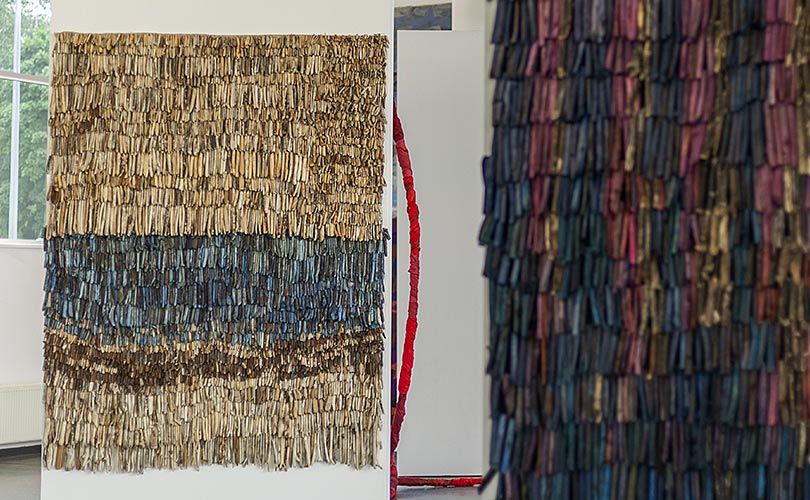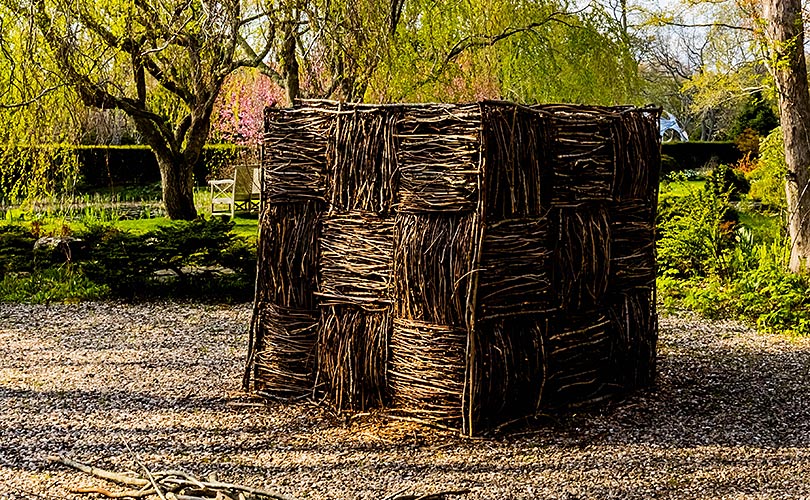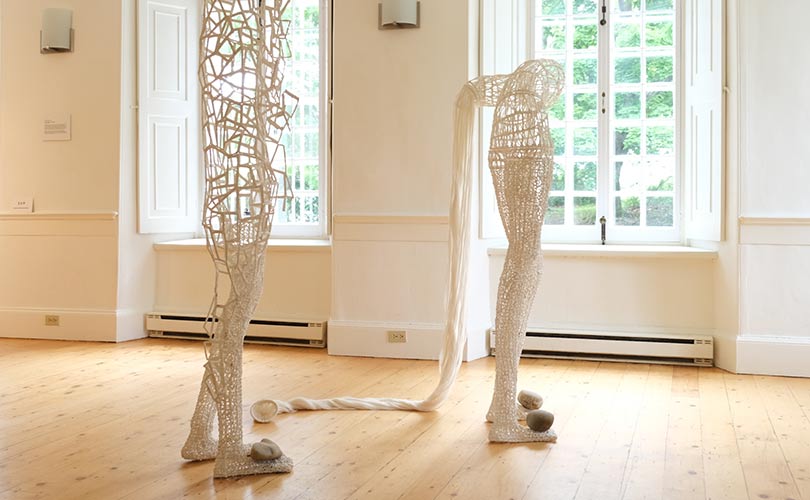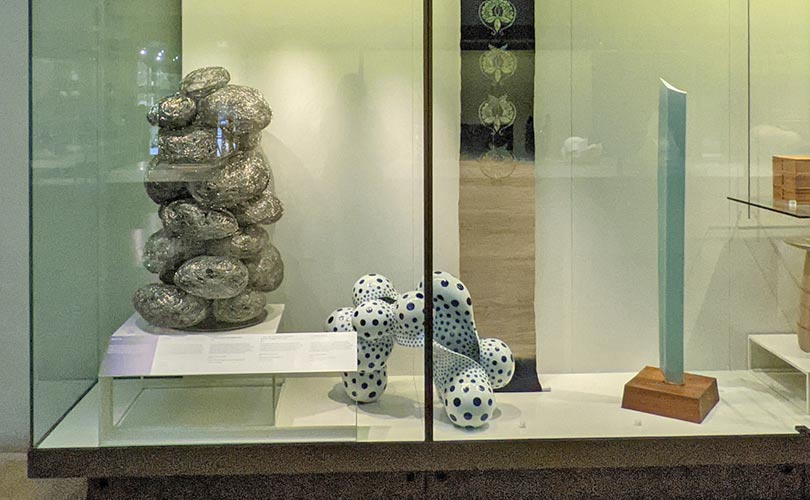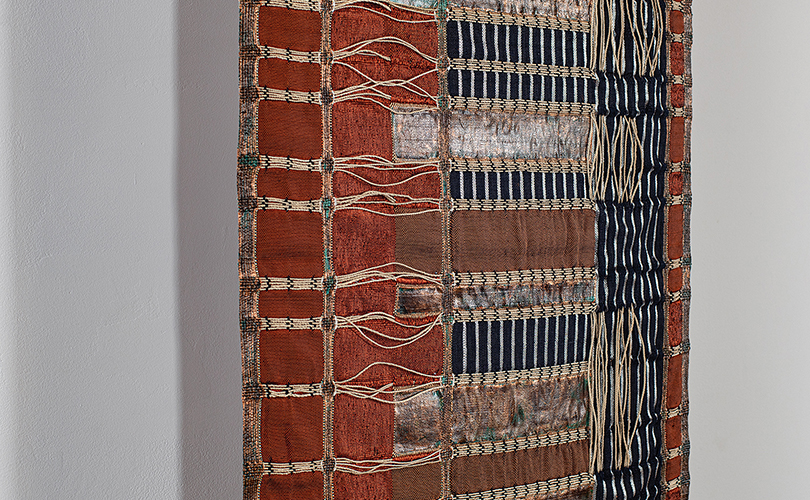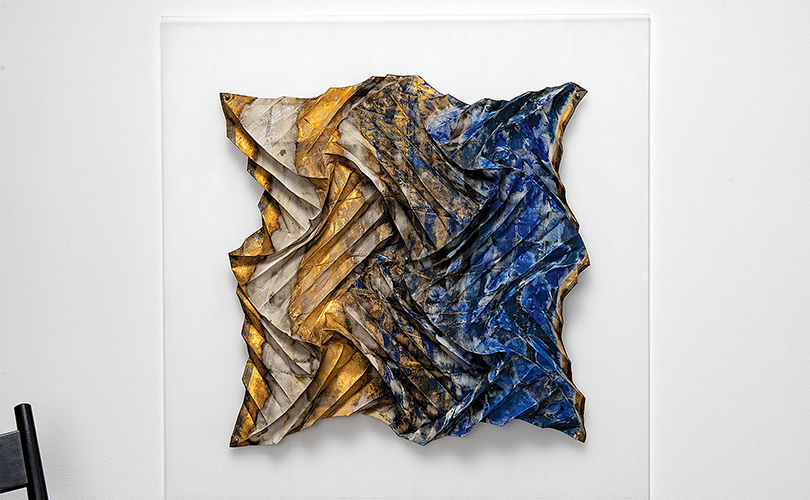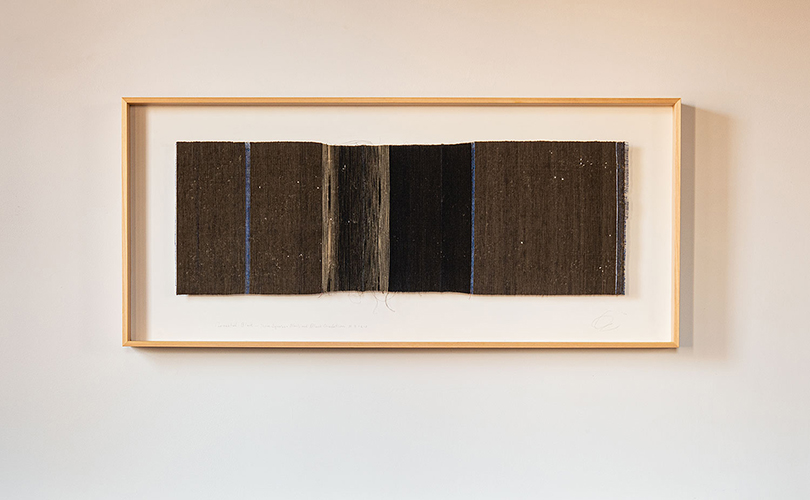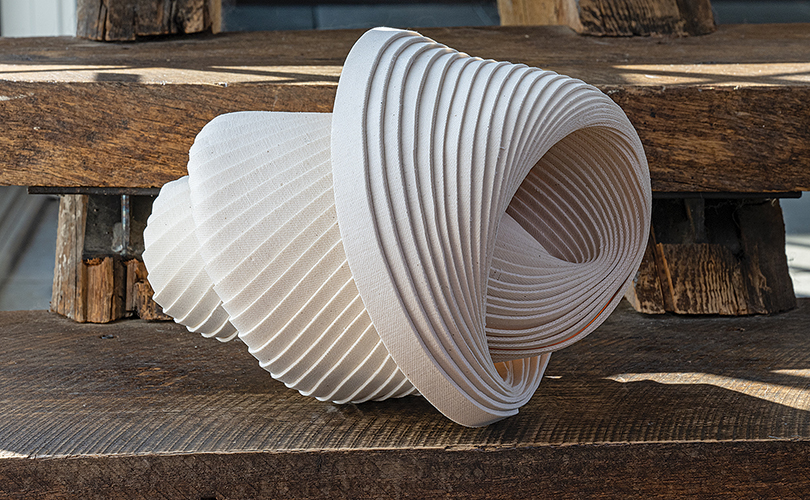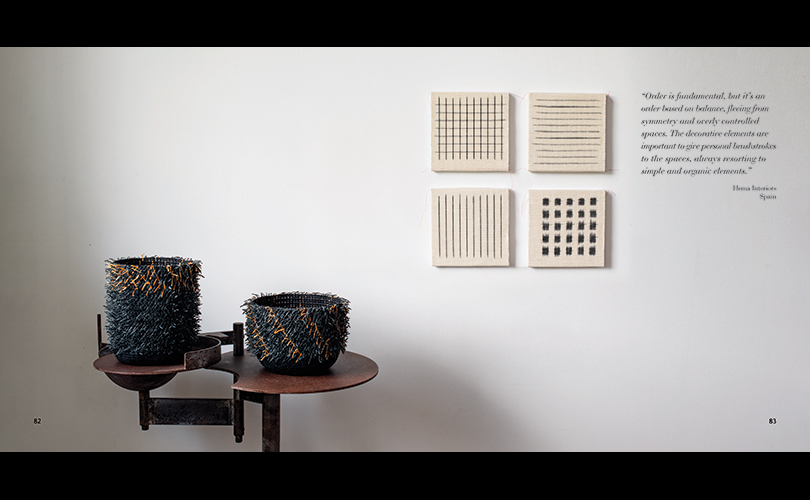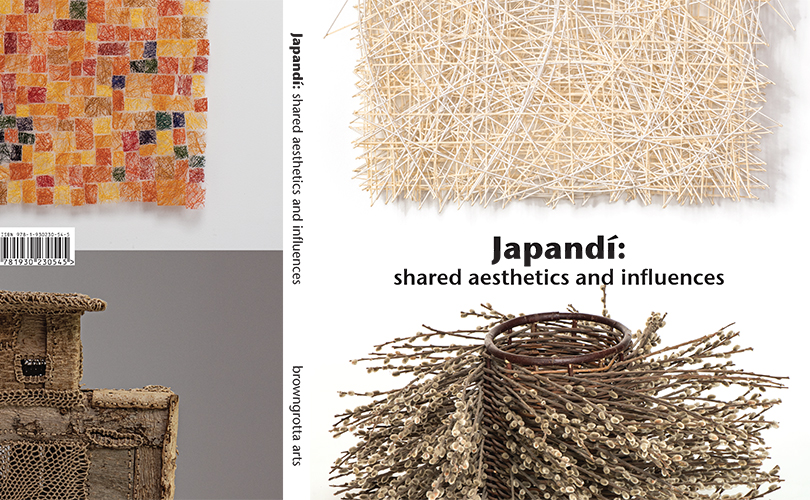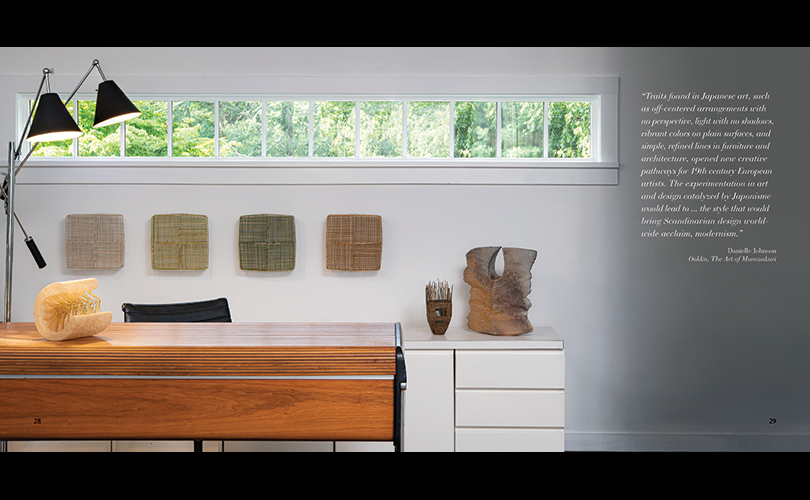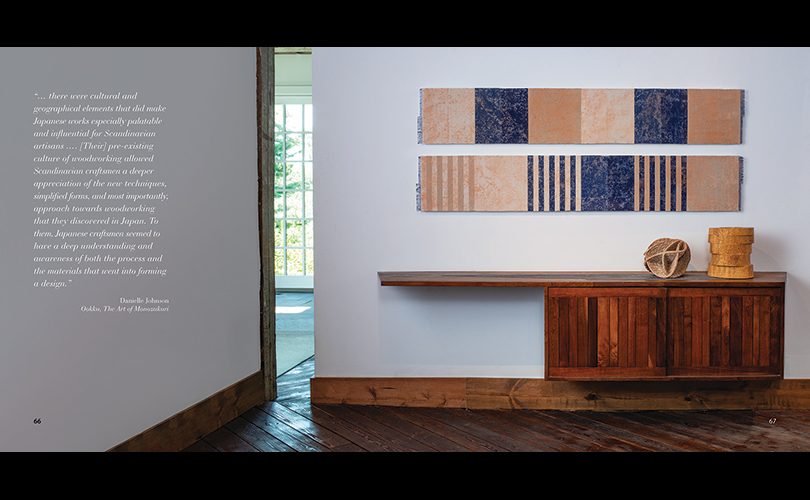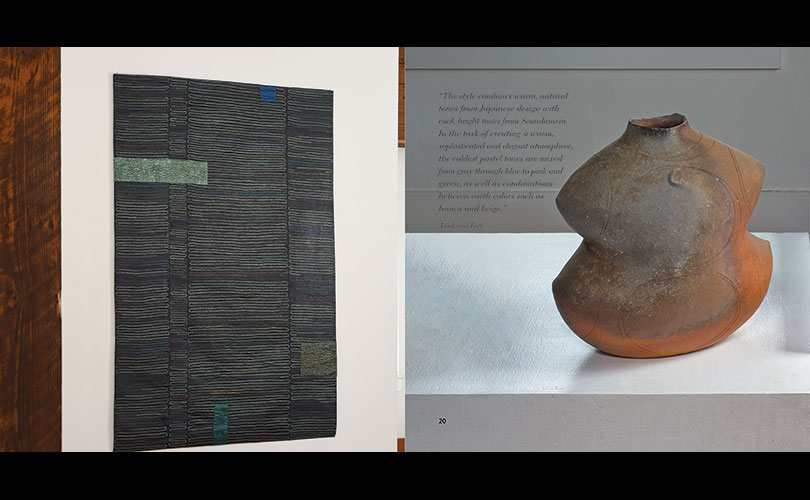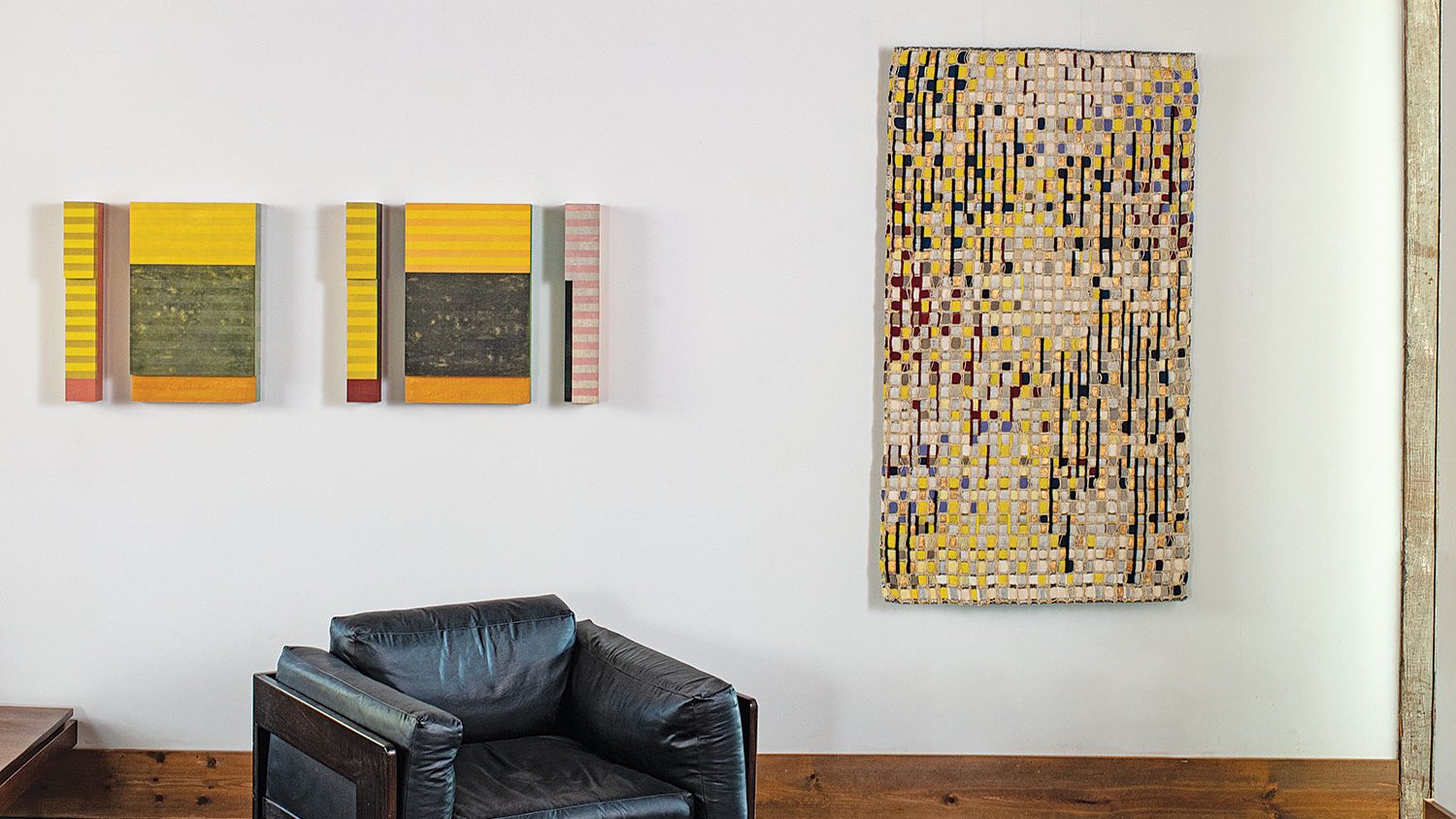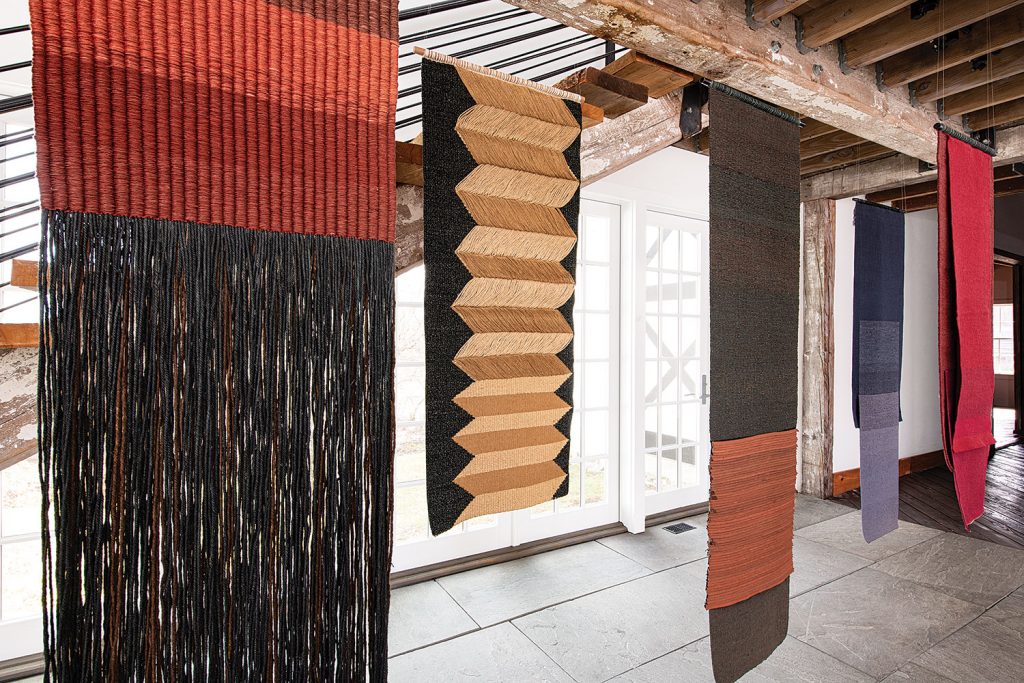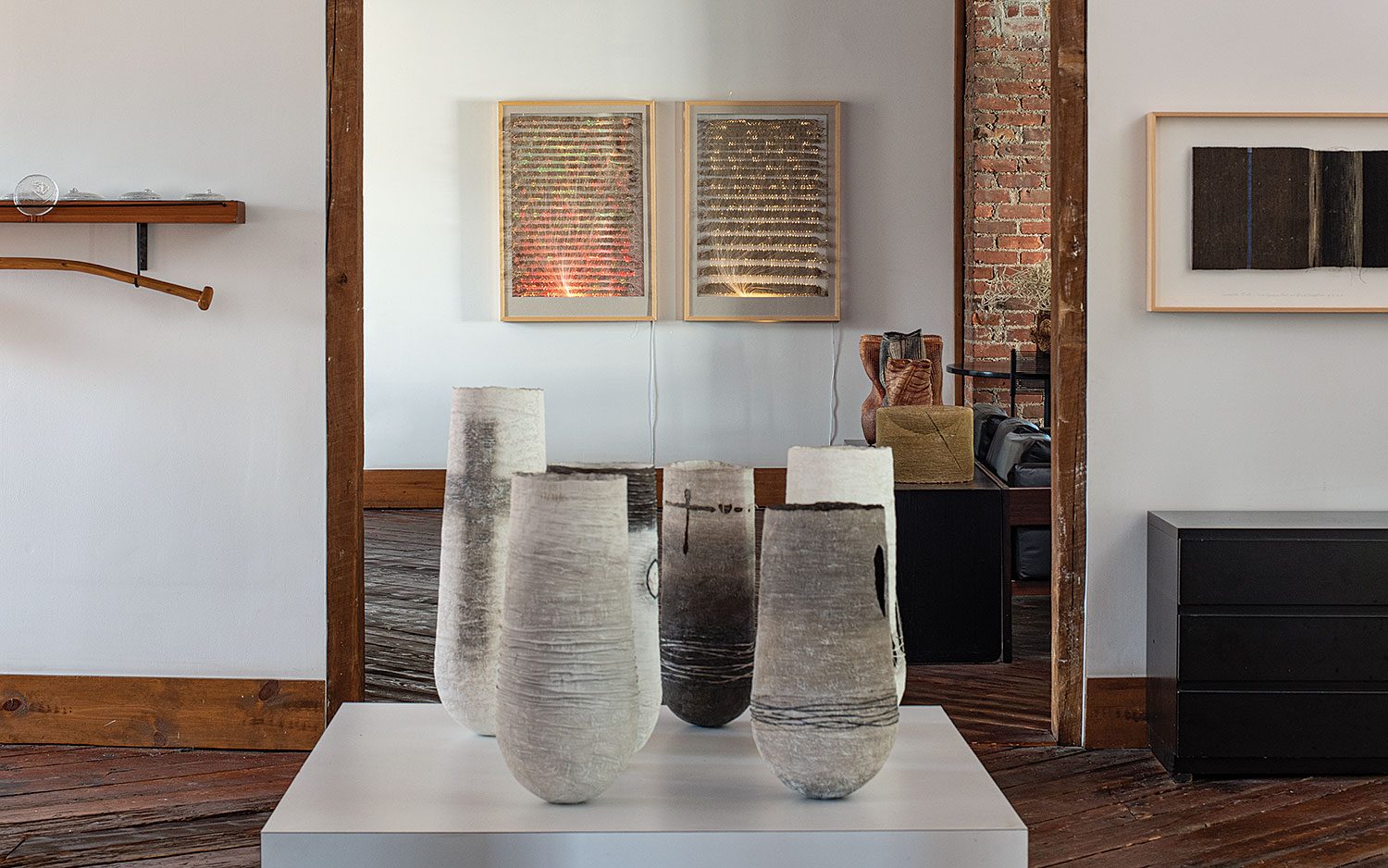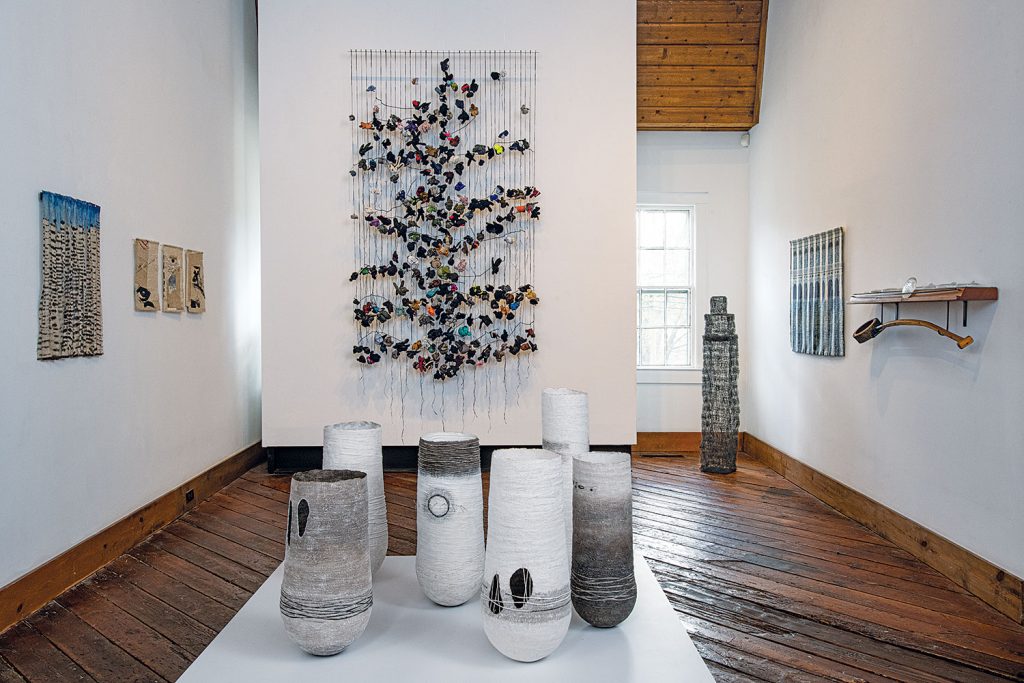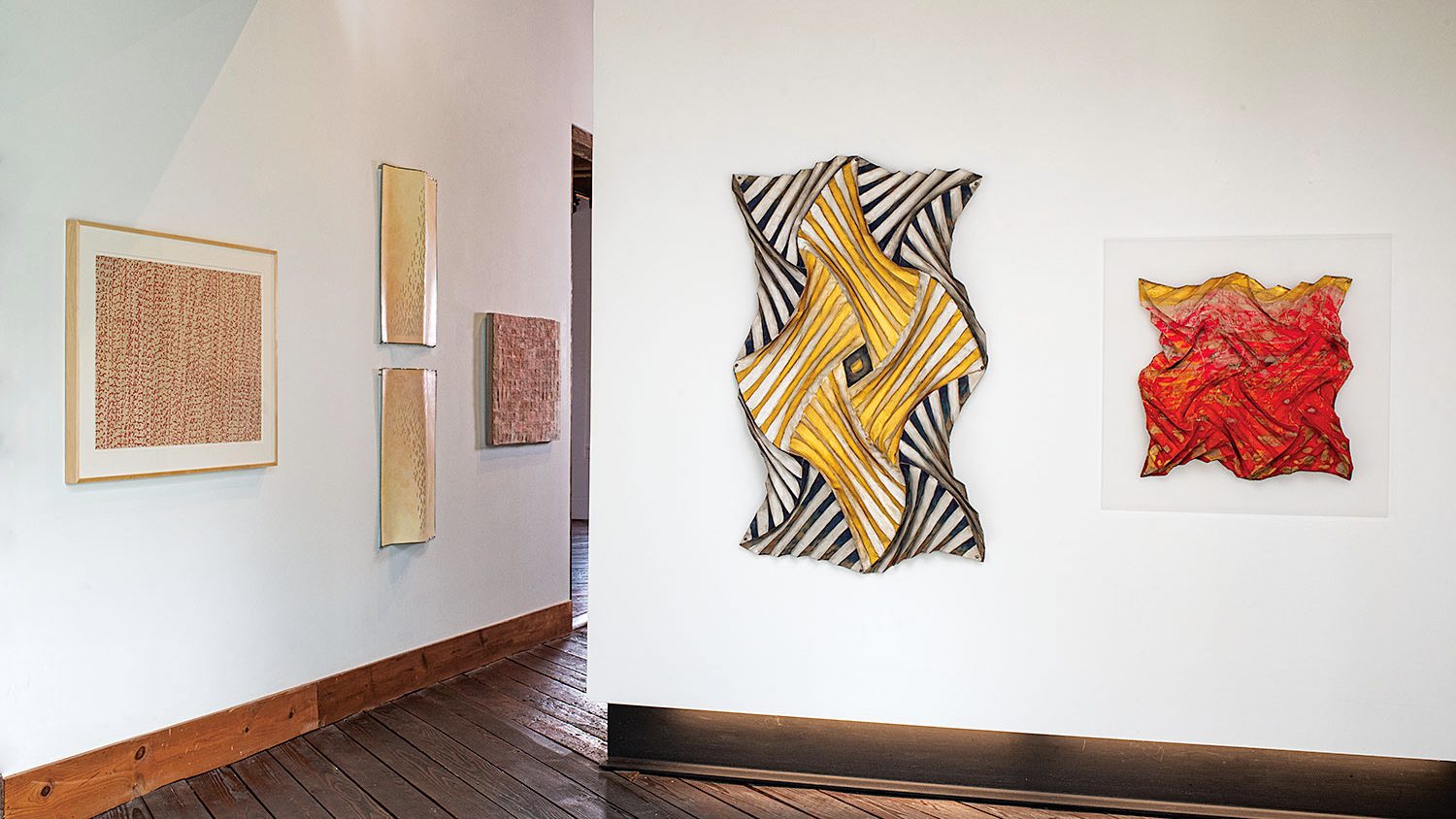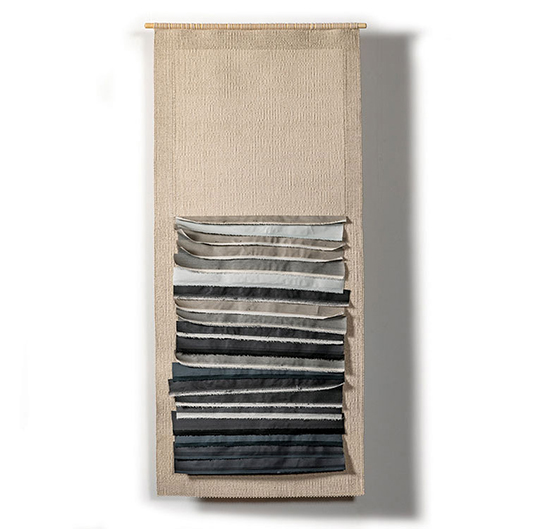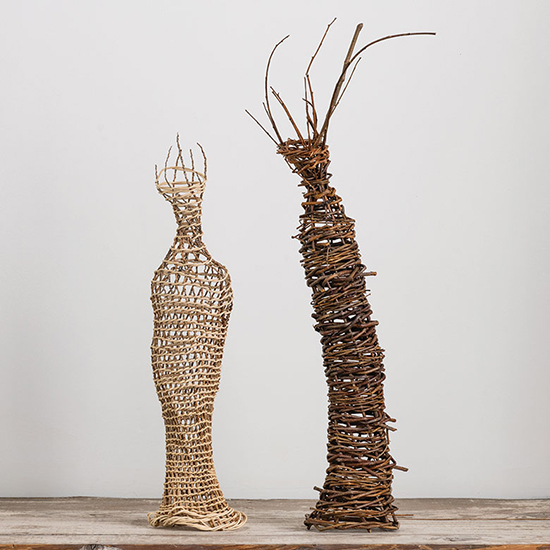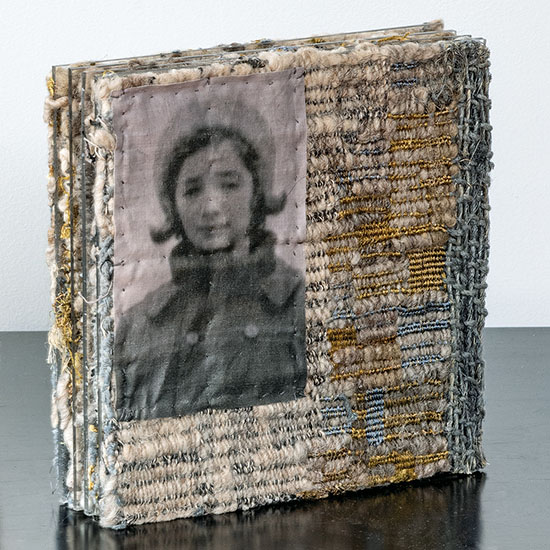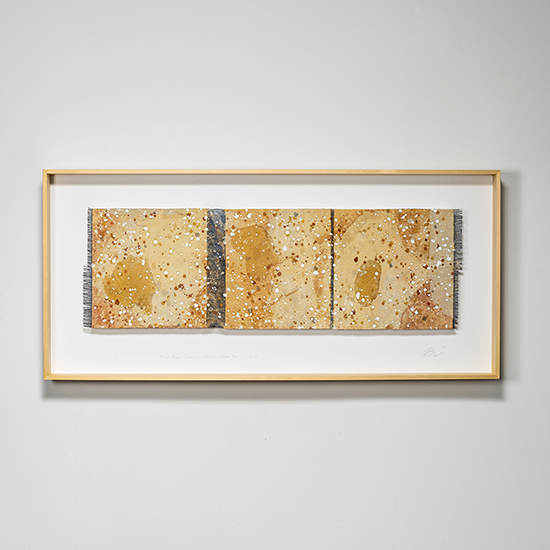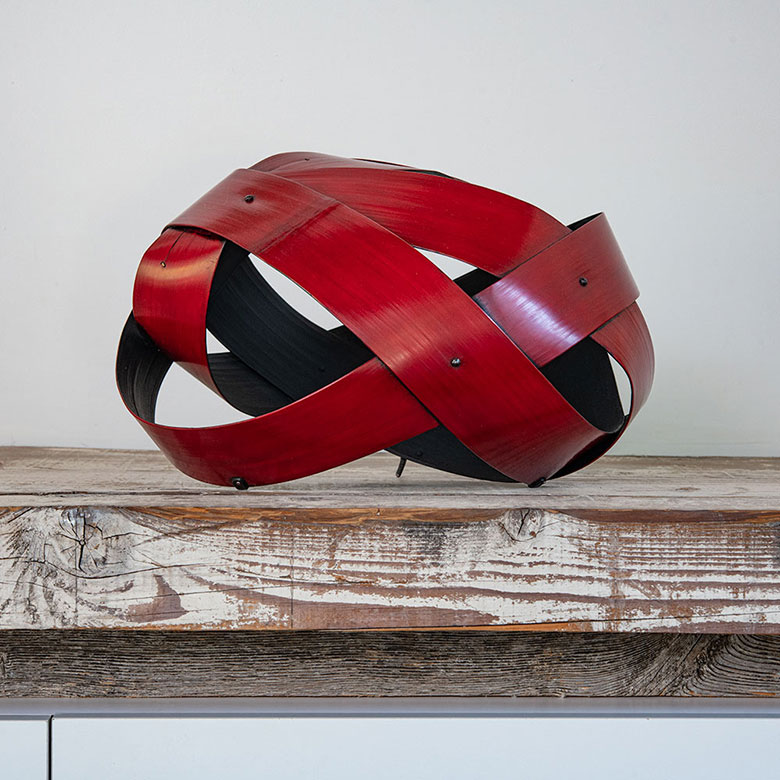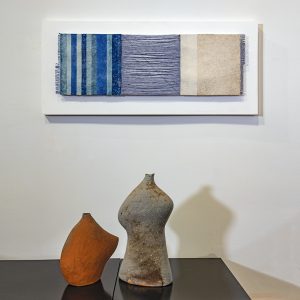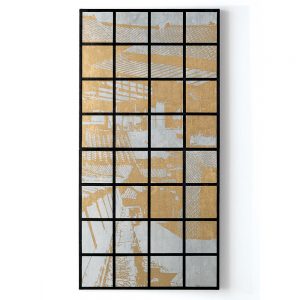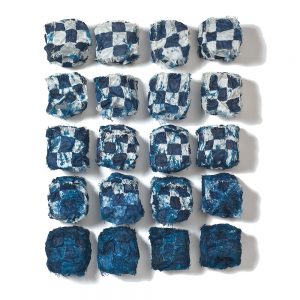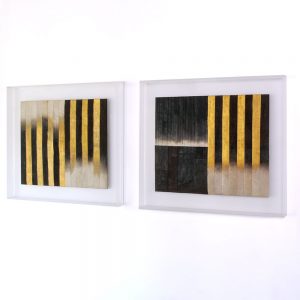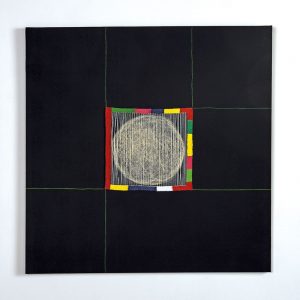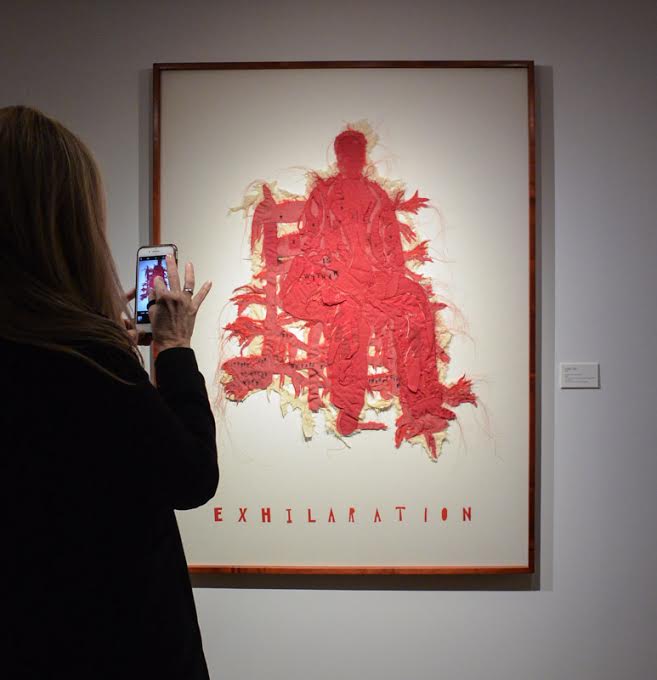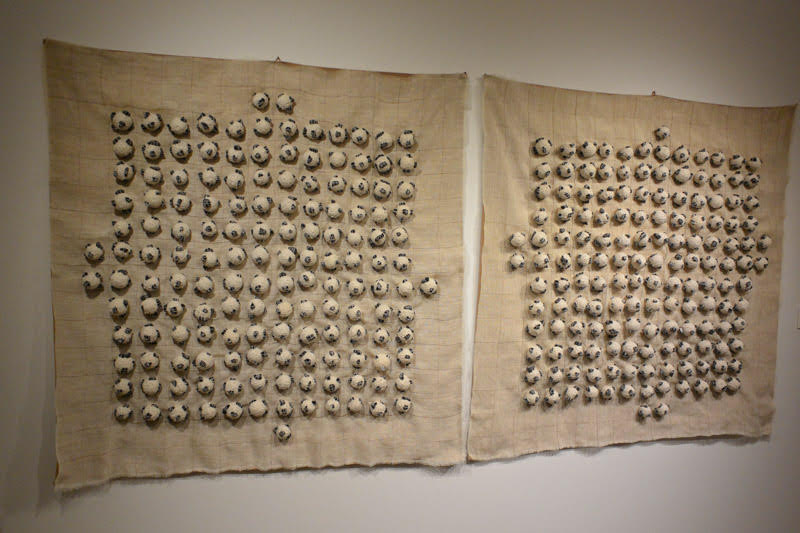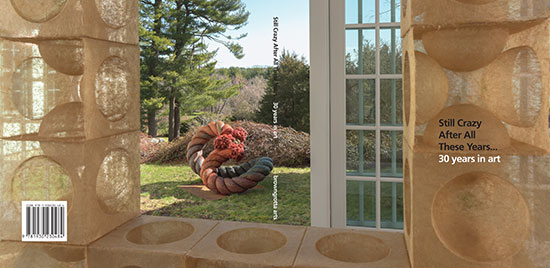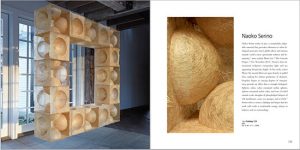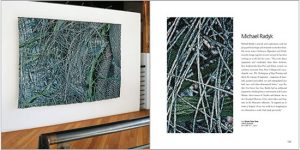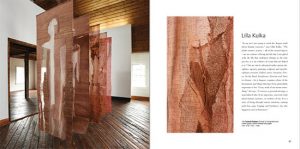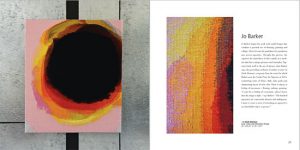April was all about highlighting new artists and gearing up for our upcoming exhibition Discourse: art across generations and continents (May 4 – 12, 2024). With just three short days until launch day, the exhibition, and all the featured artists, have been at the forefront of our minds! In case you missed any of our artist highlights from April, we’ve put together a recap for you. Read on for the full scoop!
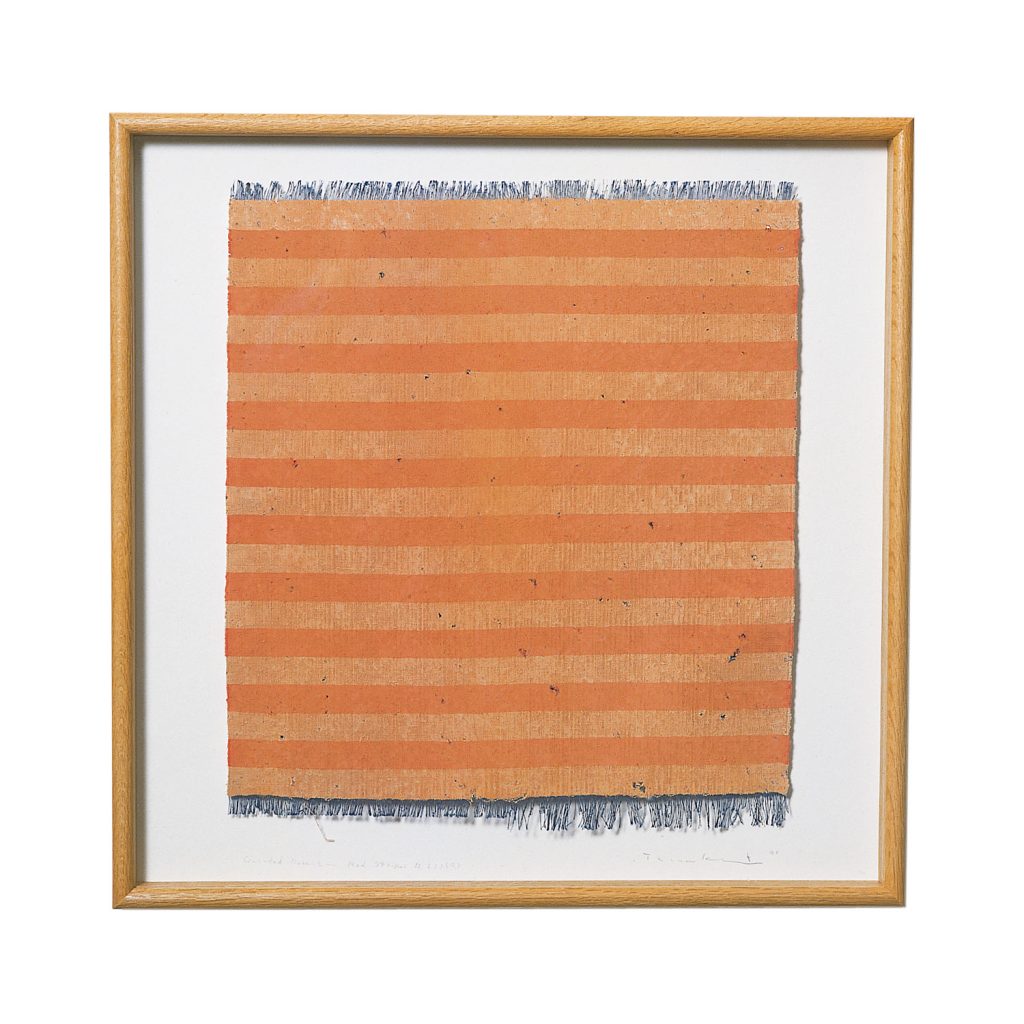
To kick off the month, we featured the remarkable artwork of Chiyoko Tanaka. Tanaka’s art is a fascinating exploration of time, symbolized through the weaving of countless weft threads. Following the weaving process, Tanaka employs a unique technique she calls “grinding,” where the cloth is rubbed with specialized tools like bricks or white stones. This meticulous process adds depth and texture to her pieces.
Tanaka’s innovative approach has earned her numerous accolades, and we are honored to showcase her extraordinary work.
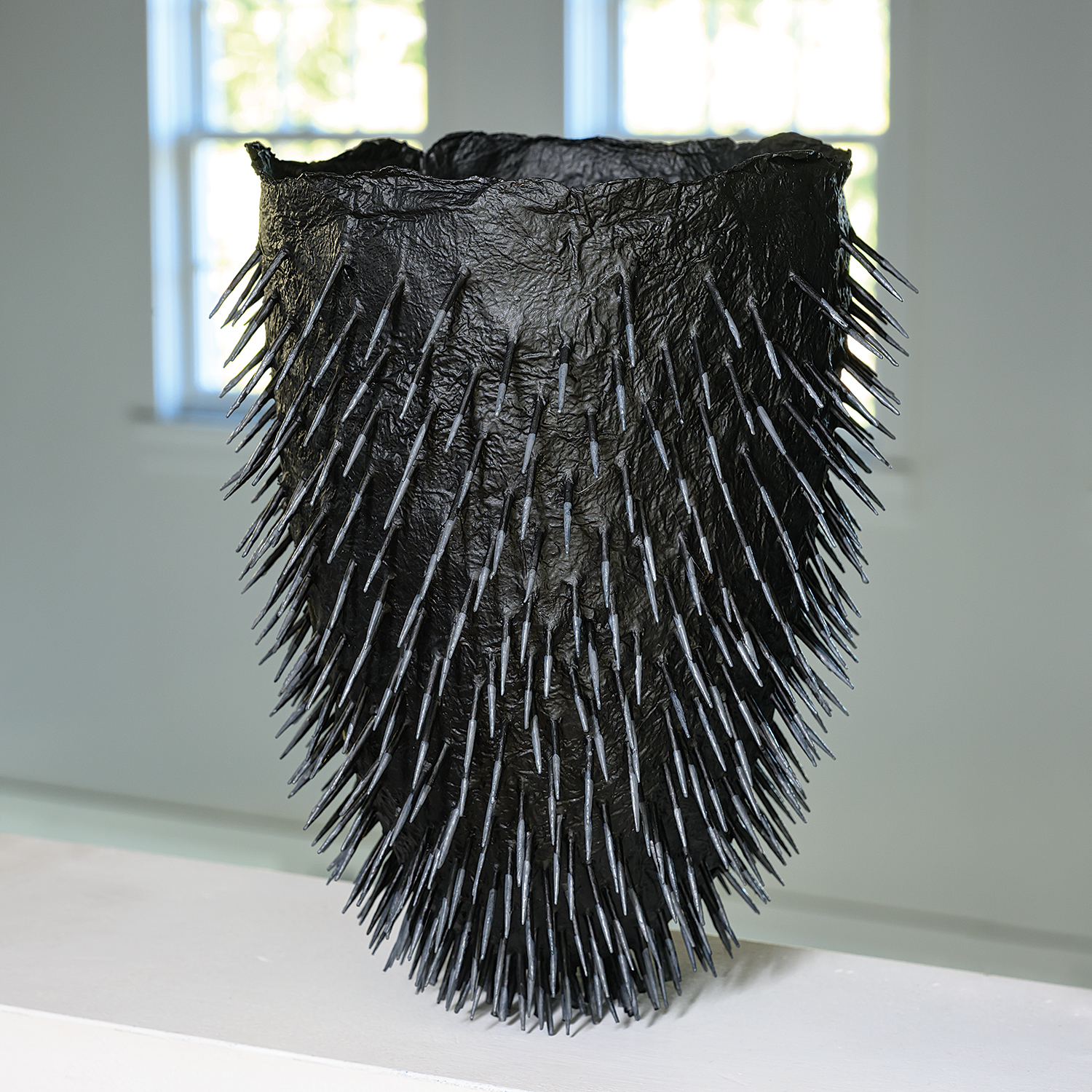
Next up in April, we turned our spotlight to artist Mary Merkel-Hess. Merkel-Hess is renowned for her captivating ‘landscape reports,’ intricate sculptural forms crafted from reed, bamboo, and paper, inspired by the serene natural landscapes of Iowa.
Merkel-Hess’s work has garnered high praise, notably becoming the first contemporary basket form to be acquired by the Metropolitan Museum of Art in New York City. We’re thrilled to include her remarkable pieces in our upcoming exhibition, Discourse, launching this weekend.
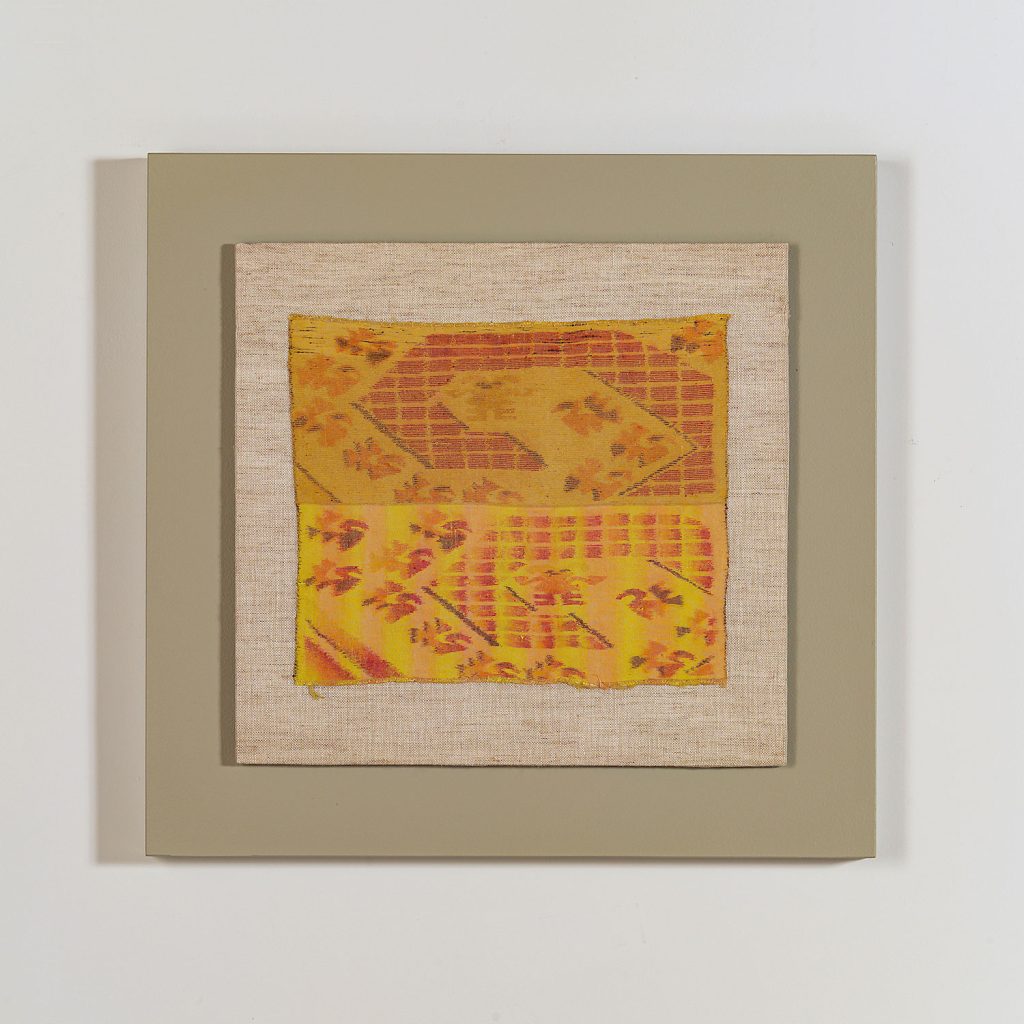
Next, we highlighted the groundbreaking artwork of the late pioneer artist, Ed Rossbach. Renowned for his innovative approach to weaving, Rossbach fearlessly explored traditional techniques and unorthodox materials like plastics and newspaper. His visionary work transcended the boundaries of basketry, elevating it to a sculptural art form. Known for his imaginative flair, Rossbach infused his creations with unexpected imagery, including references to pop culture.
Rossbach’s iconic pieces will be featured in Discourse this weekend, adding to the rich tapestry of talent on display. We’re truly honored to showcase his groundbreaking work.
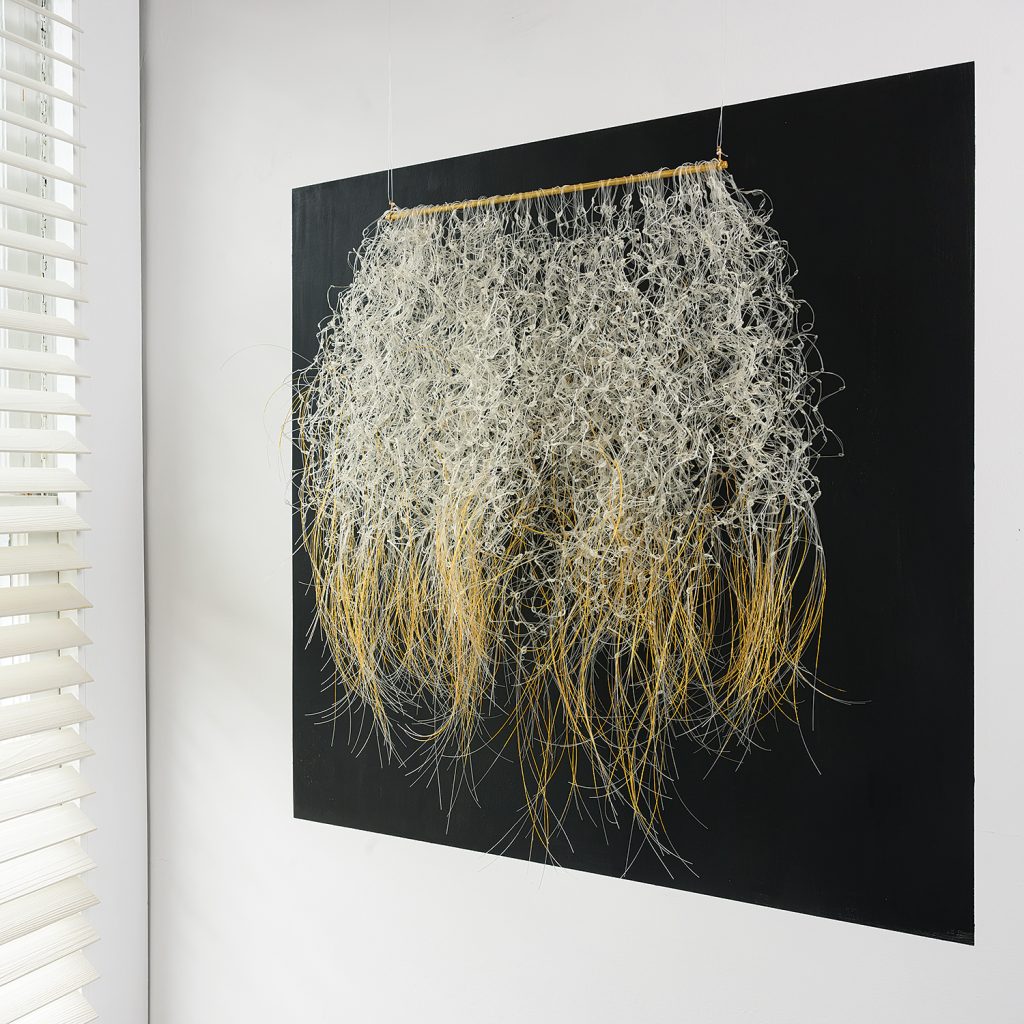
We then turned our focus to the late, award-winning artist, Yvonne Pacanovsky Bobrowicz. Renowned in the art world for her mesmerizing sculptures crafted from synthetic monofilament, Bobrowicz’s work captivated audiences with its cascading and light-transmitting qualities. Her artistic vision was deeply rooted in the exploration of interconnections and continuum.
When reflecting on her creations, Bobrowicz expressed, “My work combines natural materials with synthetics, bridging opposites and exploring concepts of randomness and order.” Her pieces, adorned with elements like gold leaf and characterized by reflective surfaces, served as alchemically symbolic representations, unifying contrasting elements in various densities, scales, and configurations.
As expected, Bobrowicz’s exceptional artistry will be showcased in our exhibition this weekend, adding another layer of depth and intrigue to the collection.
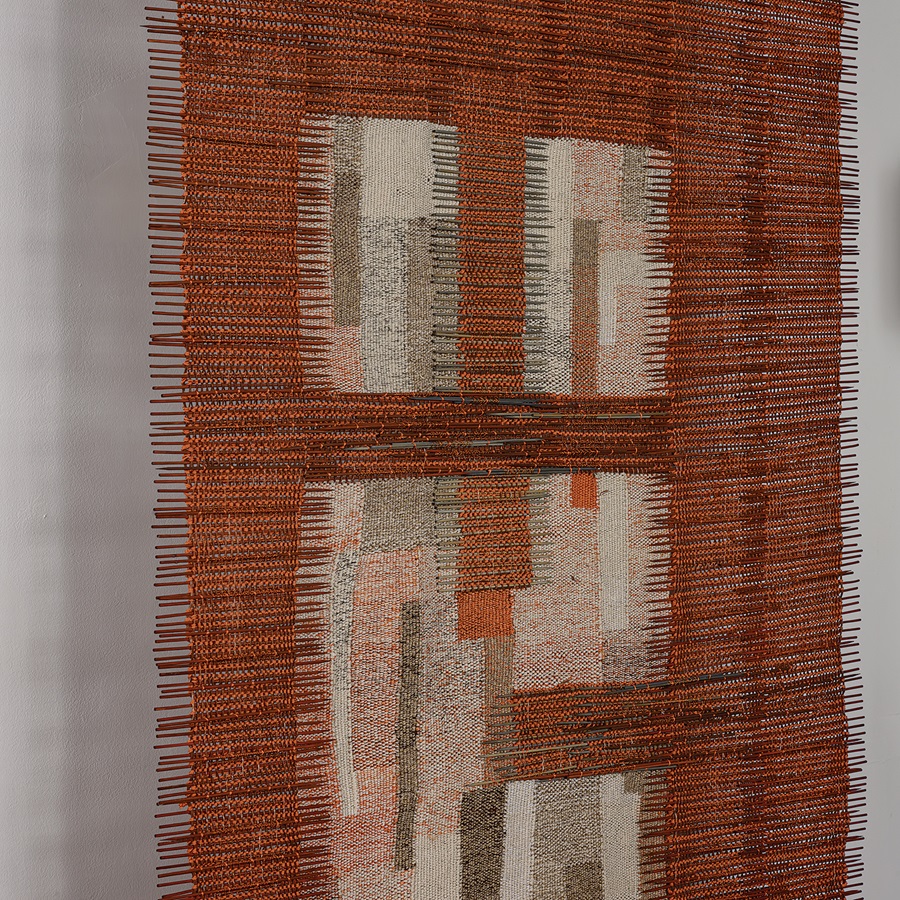
Last, but certainly not least, we highlighted the work of artist Lija Rage. In her artistic process, Rage employs a unique approach, painting small sticks and wrapping them in copper wire, meticulously layering them through gluing and sewing until the artwork is brought to completion.
Rage’s pieces possess a timeless quality, distinguished by her vibrant color infusions that draw inspiration from the natural landscapes of Latvia, her home country.
Once again, Rage stands among the many talented artists featured in Discourse this weekend, contributing her distinctive vision and craftsmanship to the exhibition.
Thank you for reading and staying up to date on all our “New This Week” features in April. We hope to see you all in person at Discourse to see some of these works in person. Reserve your spot here.

